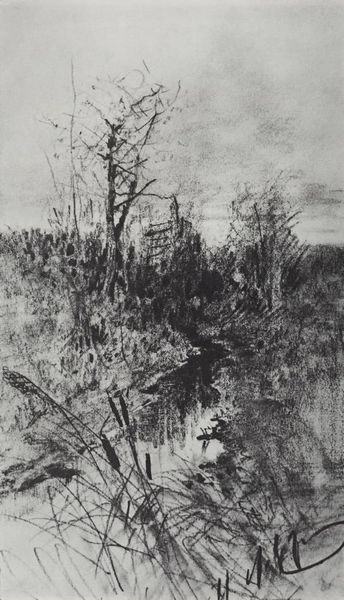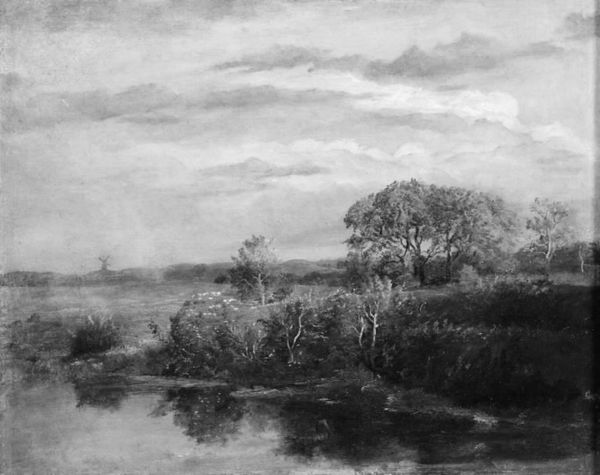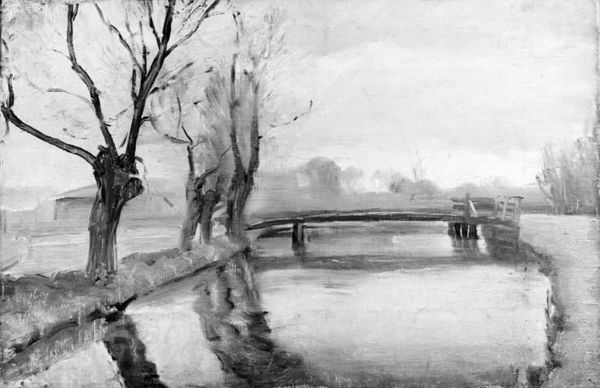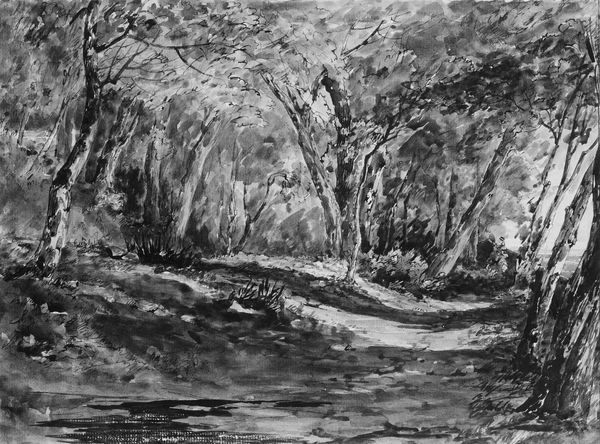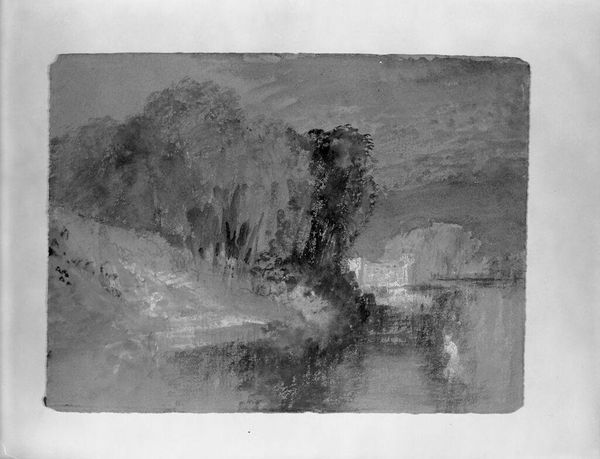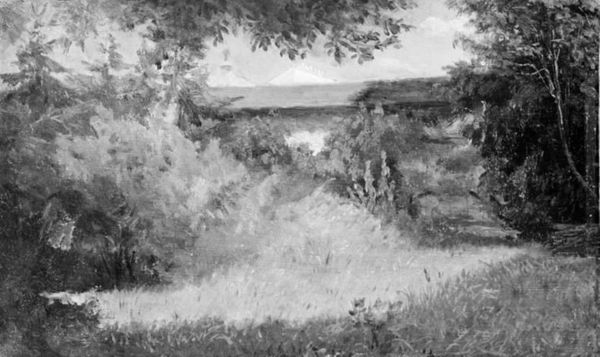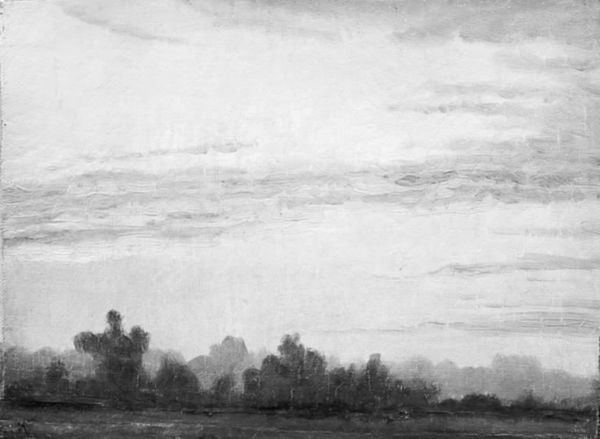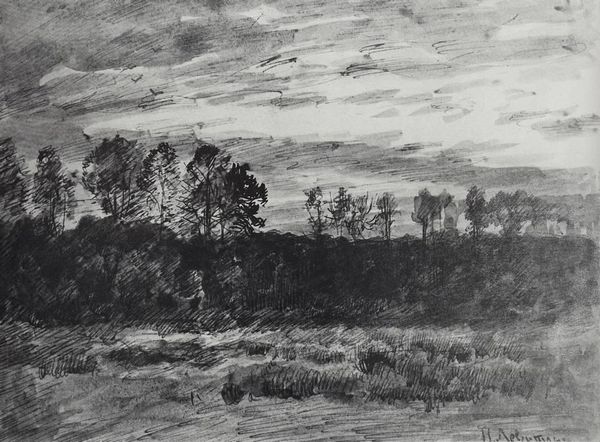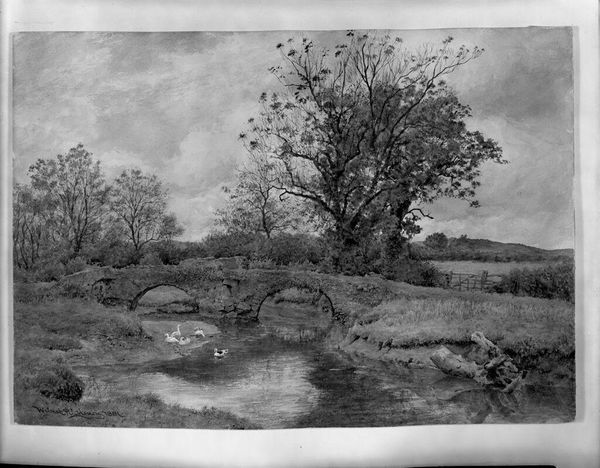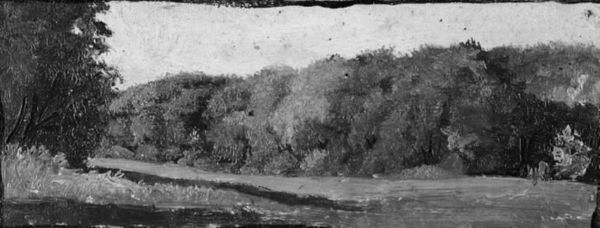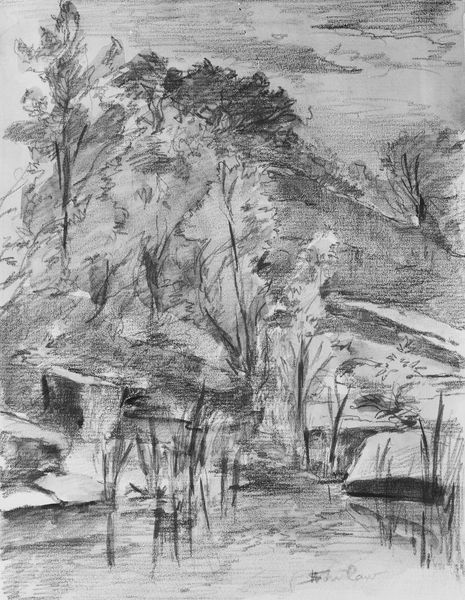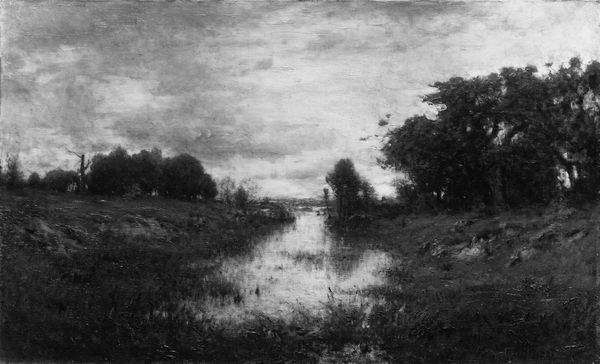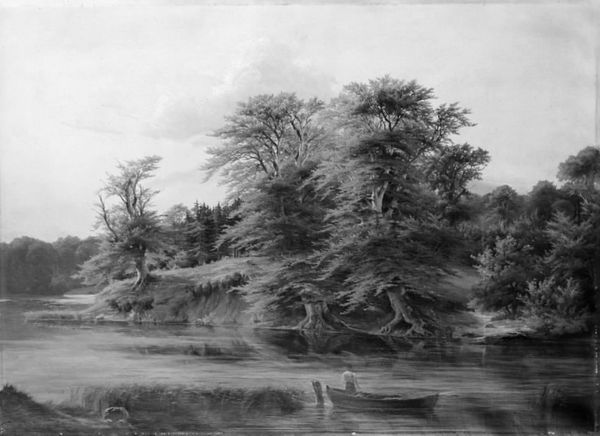
drawing, tempera, charcoal
#
tree
#
drawing
#
lake
#
tempera
#
countryside
#
impressionism
#
landscape
#
charcoal drawing
#
forest
#
water
#
charcoal
#
post-impressionism
#
charcoal
Copyright: Public domain
Vincent van Gogh made this landscape in Nuenen using pencil and pen to capture the rural surroundings of the Dutch village where his parents lived. Here, Van Gogh uses the stark monochrome to create a somber mood, reflective of the social realities he witnessed. He arrived in Nuenen in 1883, a time of economic hardship for the rural working class in the Netherlands. The church spire in the distance, the stark trees, the reflections on the water—all speak to the intertwined roles of religion, nature, and the daily lives of the peasants. Van Gogh was particularly interested in representing the lives of the working class, and he saw the landscape as a backdrop to their struggles. This aligns with a broader trend in 19th-century art, where artists started turning their attention to the lives of ordinary people and the realities of industrializing societies. Understanding this work requires delving into the social and economic history of the Netherlands in the 1880s. The study of Van Gogh's letters, family history, and the local archives can provide a clearer understanding of the artwork.
Comments
No comments
Be the first to comment and join the conversation on the ultimate creative platform.
